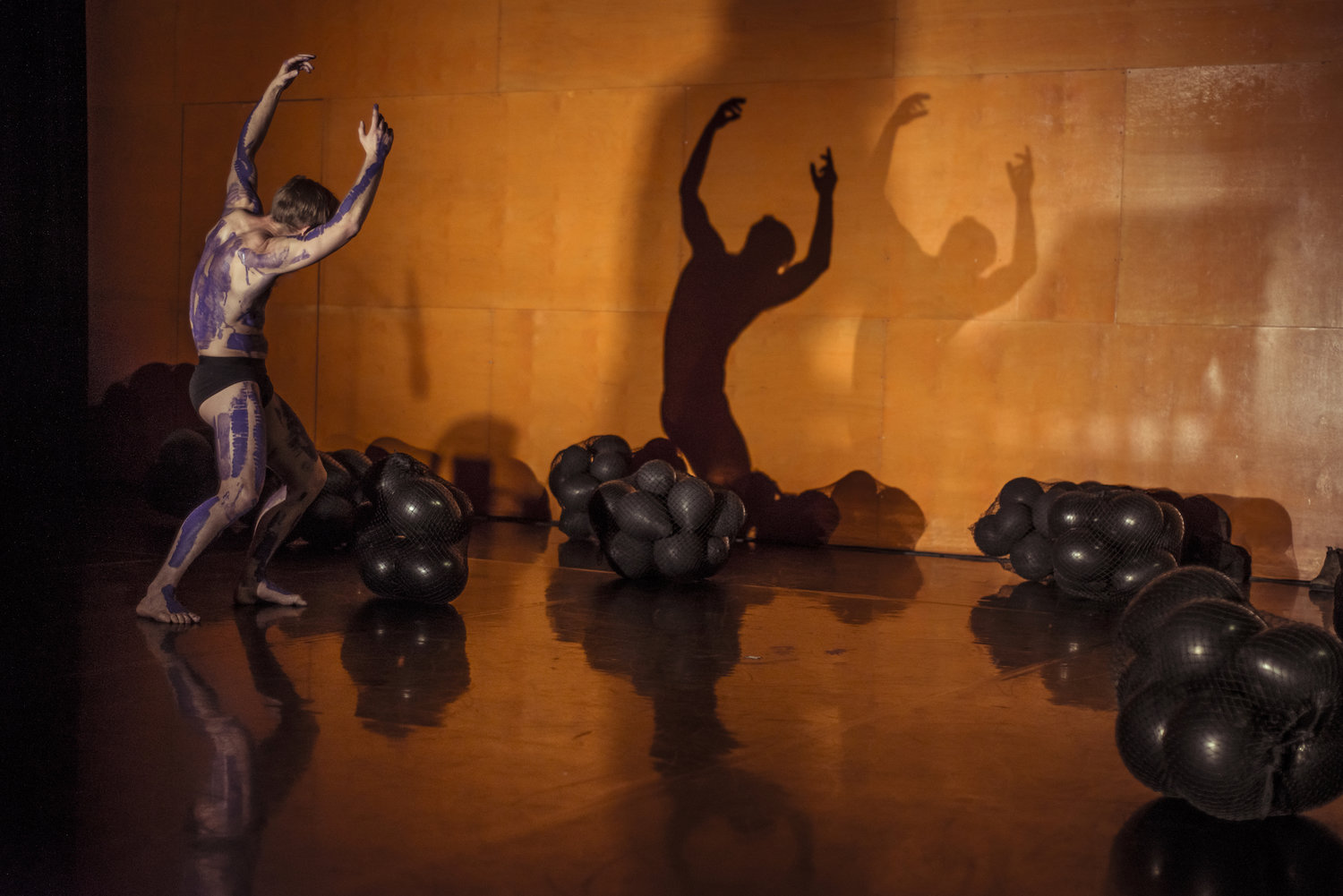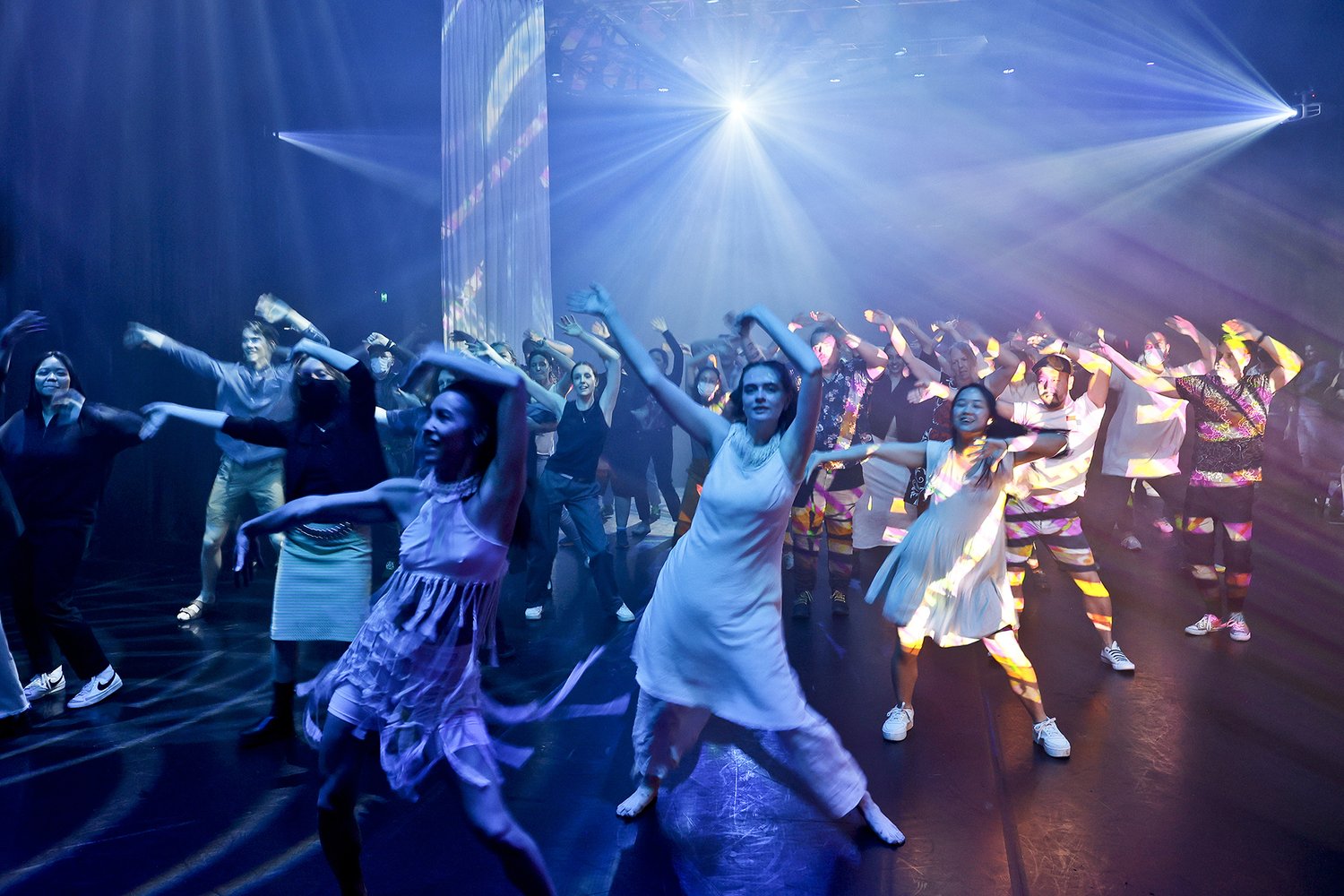Joel Bray is an artist living and working in Naarm Melbourne, and a proud Wiradjuri man who’s practice springs from his cultural heritage.
His works are intimate encounters in unorthodox spaces in which audience members are invited in as co-storytellers to explore the experiences of fair-skinned Aboriginal people and contemporary gay men in an increasingly digital and isolated world.
Joel’s body becomes the intersection site for those songlines: indigenous heritage, skin colour, and queer sexuality.
We invited Joel to share his origin story. It’s a delightful tale of discovery, dance, and discotheques.

I was a student activist at university, and very politically engaged in Blak rights and land rights. It was around the time of the 2000 Sydney Olympic Games, which was actually a really political period, with many people using the Olympics as a platform for protest. I reached a fork in the road and realised this wasn’t sustainable. I couldn’t be at four protests every Saturday for the rest of my life and I also realised that political change requires all kinds of things. So, I had a bit of a thought process about it.
I’m Wiradjuri. My ancestral country is the big central part of New South Wales; it’s known as three rivers country, the Wambool (Macquarie), the Kalari (Lachlan) and the Murrumbidjeri (Murrumbidgee). I went up to Wiradjuri country and I hung out there and reflected. I was watching some birds one day, flitting through the trees, watching them dance. This really inspired me.
At the time, I had just discovered dance. I’d recently come out as gay and started going out clubbing. I was in love with it and would get very exploratory on the dance floor. So I had this vague idea that I was interested in dance, and I also knew that I was interested in political change.
I started to reflect a little bit on the way artists keep the candle alight for change or keep the ideas of change alive until a popular movement or a revolution can happen. I went to my dad and he said “What if you went to NAISDA?”, which is the National Aboriginal and Torres Strait Dance School.
One of the great things about them is they’re really well set up for adults who’ve never danced before. It was a real privilege. I went along, kind of interested in dance but actually more interested in hanging out with a bunch of other Blackfellas for a while and being a part of a black community since I was brought up by my white mother. Then of course I got in there and my first dance class was with this fabulous African American dancer, who came over with the first ever tour of West Side Story. He taught a lyrical jazz class. There were actual spirit fingers. And I was in love. That was it. I caught the bug. I’ve been doing it for 20-something years ever since.
Dancing around the world
First I studied at NAISDA, and then I went to WAAPA in Perth. Then I did that thing where I went over to Europe and worked. I ended up in Europe and Israel for 10 years. Tel Aviv is a really incredible place for contemporary dance. Everyone knows about the Batsheva Dance Company, but that’s only one amazing company. Every weekend there were six or seven different dance shows you could go and see. It was an embarrassment of riches.
The dialogue between dancers and choreographers in Tel Aviv was really exciting. It was there that I made the decision to learn the craft. I trained in contemporary and ballet and became really interested in how high I could get my leg and how many pirouettes I could do. I hadn’t exactly got sidetracked but I got lost in that for a while.
But I felt called to come back home at some point; to remember that original idea I had, which was to be a choreographer. I wanted to make work that caused change. Work that was engaging with the culture and society around us in a political way.
Homecoming
It was amazing to come back home to country, and see how the broader conversations around race and politics had progressed here. It was really different from the 10 years previous.

It was a really exciting time for me to start making work. And then of course I had to figure out how to do it! I’d been in studios, I’d danced with lots of choreographers. Like many dancers, I had never opened my mouth. I was taught that dancers were to be seen and not heard.
Soon after returning, I started working with Anouk Van Dyke at Chunky Move and was booked for a show called Complexity of Belonging, which was a collaboration with Melbourne Theatre Company. The theatre director, Falk Richter, encouraged us to talk, to use our voices, to tell stories about our lives and to improvise with text. I discovered I had a bit of a knack for it, thankfully, because the other dancers I was with were all way out of my league! It was such a privilege to be in the studio with them. They’re so exceptional.
It was during this time that I discovered what I was able to bring to that process; yarning. And this set me on the course of the work I make.
I’m passionate about dance. I really like it when it’s virtuosic and space-eating. The body and movement are my starting point for everything. But I weave it with dialogue, language, and storytelling. My work is often autobiographical
Then I made a show
My first foray into choreography started with doing some writing, and I knew this show was going to be about the platypus. I remembered a story that my grandmother told me about the making of the platypus. Basically, the platypus is a mutant creature made from a duck and a water rat and it had to leave where she lived in order to go to cooler waters. I always identified with that animal because I am fair-skinned, but identify as Aboriginal. I was living in Israel amongst Jews. I am very queer, but grew up in a Christian household. I always feel like I’m out of place in the context that I’m in. So, in 2019 I made a work about this. It was very autobiographical and it is Biladurang, the Wiradjuri word for platypus.
At the time of making the work, I was touring around Europe, working with different choreographers, and living in hotel rooms. So, I wanted to set the work in a hotel. I planned to dress the stage like a hotel room but the producer I was working with had this light bulb idea and suggested we did it in an actual hotel room. I thought this was brilliant. And then of course, once I started making the work and started imagining the audience coming into this really intimate space; it felt very strange to perform like I was on a stage. It felt very strange not to talk with them and interact with them. And that was how I stumbled on the third element of my work, which is audience interaction and participation.
In that work I got audience members to roll me a cigarette and make the bed with me. I was handing out champagne and we all danced together. I discovered this skill, which I’ve honed since, of getting audiences to do stuff for me. This is not an easy thing to do! It requires delicate relationship building.
Weaving in audience interaction
A lot of the time that I’m in the studio, making a new work, I can bang the dance steps out pretty quickly. I write really quickly. But there are a lot of hours spent ‘war gaming’ how audience participation might work. I’ll get anyone who’s on the project to come in and then talk them through what I’m thinking, and ask them how the audience might react. Then we talk about this and refine it. Throughout the whole creative process, I’ll have small guest test audiences come in, all of whom are very generous because the first couple of tries are always really clunky and awkward, and often embarrassing for everyone in the room! But the only way to organise audience participation is to try it out.
I’ve been doing this for seven works now. I’m getting better at being able to predict how audiences might react to any given thing.
I think of my works as a plat that weaves together, dancing, speaking and audience participation. Then I apply that to a particular thing that interests me.
Anyone who’s seen my works, would notice that they’re episodic in a way. Each new work picks up on a thread that was left unfinished in the previous work.
An interviewer once asked me “What’s your superpower as a choreographer?” and I thought about it for a moment and I was like, “I am a professional oversharer!”. I have no problems pouring out my guts, telling you all the most embarrassing stories from my life. All my deepest fears and worries. I’m not the highest jumper. I’m not the best dancer, but that’s my superpower as a choreographer, as a performer. I think that’s one of the reasons why people resonate with my work. And I know this because they send me Facebook messages and say, “Oh, you said the thing that I’ve always thought but never had the guts to say out loud,” or “That is a similar story to this embarrassing thing or this shameful thing that I have in my life. Thank you for talking about it.”
Choreograph in a Disco
I made a work called Considerable Sexual License in 2020. I’m interested in gatherings and orgies are like a type of gathering. My original provocation was that it was going to be an orgy between the performers and the audience. But I couldn’t figure out how to make that happen in a smooth way. So it became this exploration of sex.

Sex is something that is obviously physical. But it’s also emotional and intellectual. It’s about relationships. So dance was the perfect form to explore that.
The performance started off as a disco with a huge mirror ball. It was so great, it was the world’s best mirror ball. And the whole thing happened around a red bed that I found on eBay for 300 bucks. I don’t know who needs a round bed. I’m not asking any questions! But it was perfect for this show. I had everyone dancing together. We’re doing these daggy, silly strips in colonial maid outfits for each other. Then right when I’ve got the audience all softened up, Carly Sheppard, an incredible aboriginal performer and dancemaker in her own right, and I performed this slow, haunting scene of implied sexual violence. And this was based on stories we’d heard from our grandmothers about their experience as domestics in white households. The performance then ended with a densely healing ritual. It was a big emotional rollercoaster for the audience but one we could take them on through dance.
Garabari: A sacred connection to County
I’ve been building relationships at Wagga Wagga, which is on Wiradjuri country. I’m Northern Wiradjuri, who are Sand Goanna people. Wagga Wagga is down in the southern community so it’s not my direct connection, but there was something about this place and this beautiful group of about five or six elders, who I’ve developed a relationship with. Then one day Uncle James Ingram said to me, “Everyone says that Wagga Wagga means the place of many crows, but that’s a lie. It means the place where people come to dance.” And I was like, well, there you go. That’s why, I was attracted to this place. It’s an ancient, ceremonial place where people came to dance. So much so that those people there were called the Wagga Wagga, the dancers.
My recent work, Garabari [December 2022], thankfully, has stopped being about how hard life is for a fair-skinned black fella. And has become a lot more about the power of ritual, of gathering, of corroboree. It was the last big work I made and presented at Arts House in Melbourne in December, and it was my most ambitious work.
I made Garabari as the culmination of a two-year choreographer-in-residence at Chunky Move. It had six dancers, one of whom got COVID, so I suddenly had to do opening night, which was a bit of a struggle because I was not fit. And it was a really like “dancey” work. But it was a big, beautiful immersive, work that started off like a very slow, solemn art gallery where the dancers are the artworks slash corroboree.

And then it turned into this explosive dance work and gradually became a rave. And we had everyone, people in their seventies and kids and everyone in between, learning to dance ‘emu’ and ‘kangaroo’ and turning them into these clubbing dance steps. And we had a big party together. We got the audience to come in and dance and learn stories.
The work involved lots of choreography. And I think it most exemplified my interest in corroboree. Corroboree means gathering, coming together. It’s a kind of ceremony, but it’s also more than just a ritual. It’s a gathering. Traditionally, you’d come and catch up with family, meet potential husbands and wives. This concept really interested me. The capacity for dance to gather people together, more so than any other art form. It happens in every culture. Clubs are just the most recent version of that. When we have a wedding, we put a dance floor in, and whenever there’s a moment to celebrate, our instinct as human beings is to come together to listen to a beat of some description. It might be clap sticks, it might be a synth, it might be African drumming, it might be whatever the cultural context is. But there’s something innate and human about coming together and dancing together.
Want to hear more of Joel’s story? Watch our Inside Dance conversation or visit joelbraydance.com to learn more about his work.
